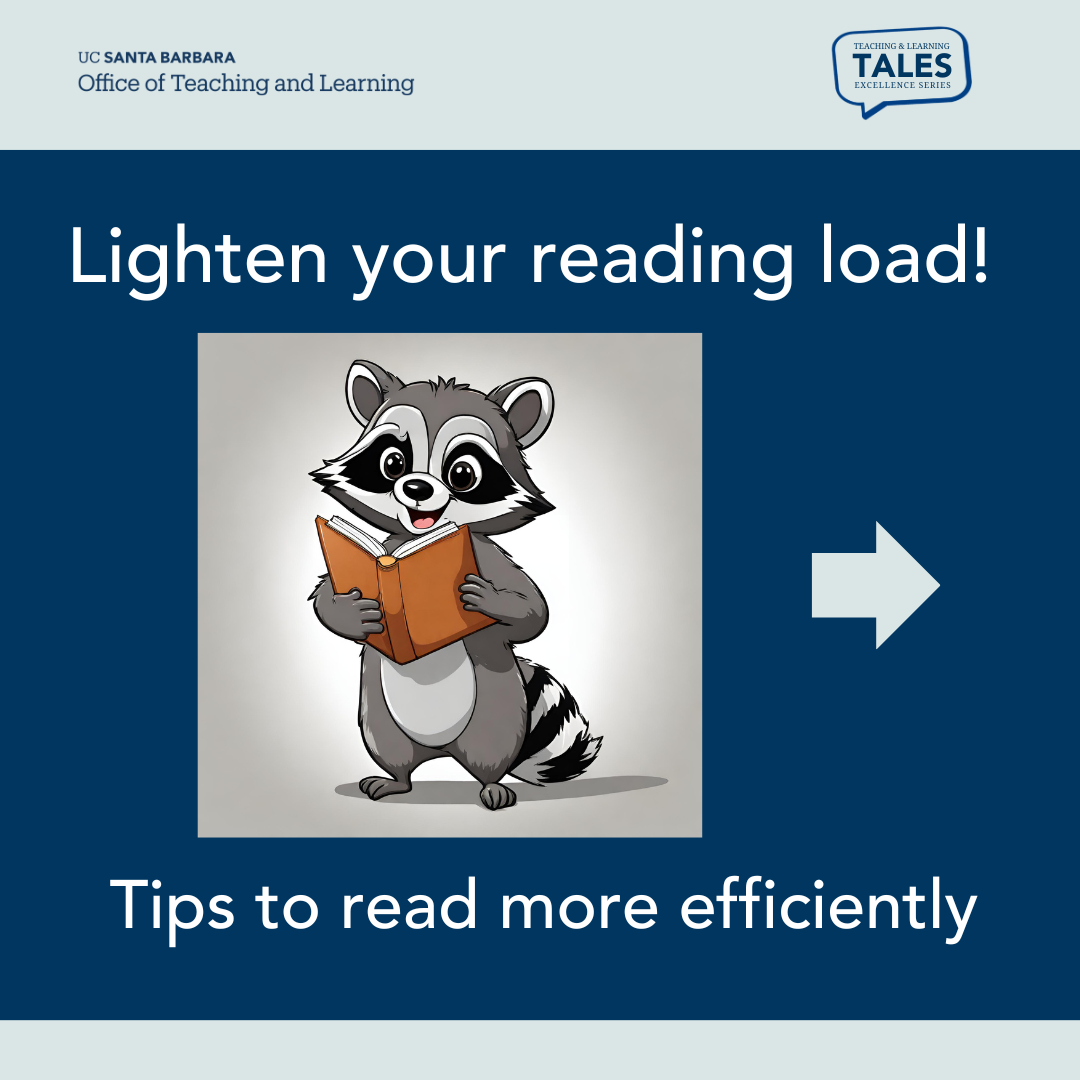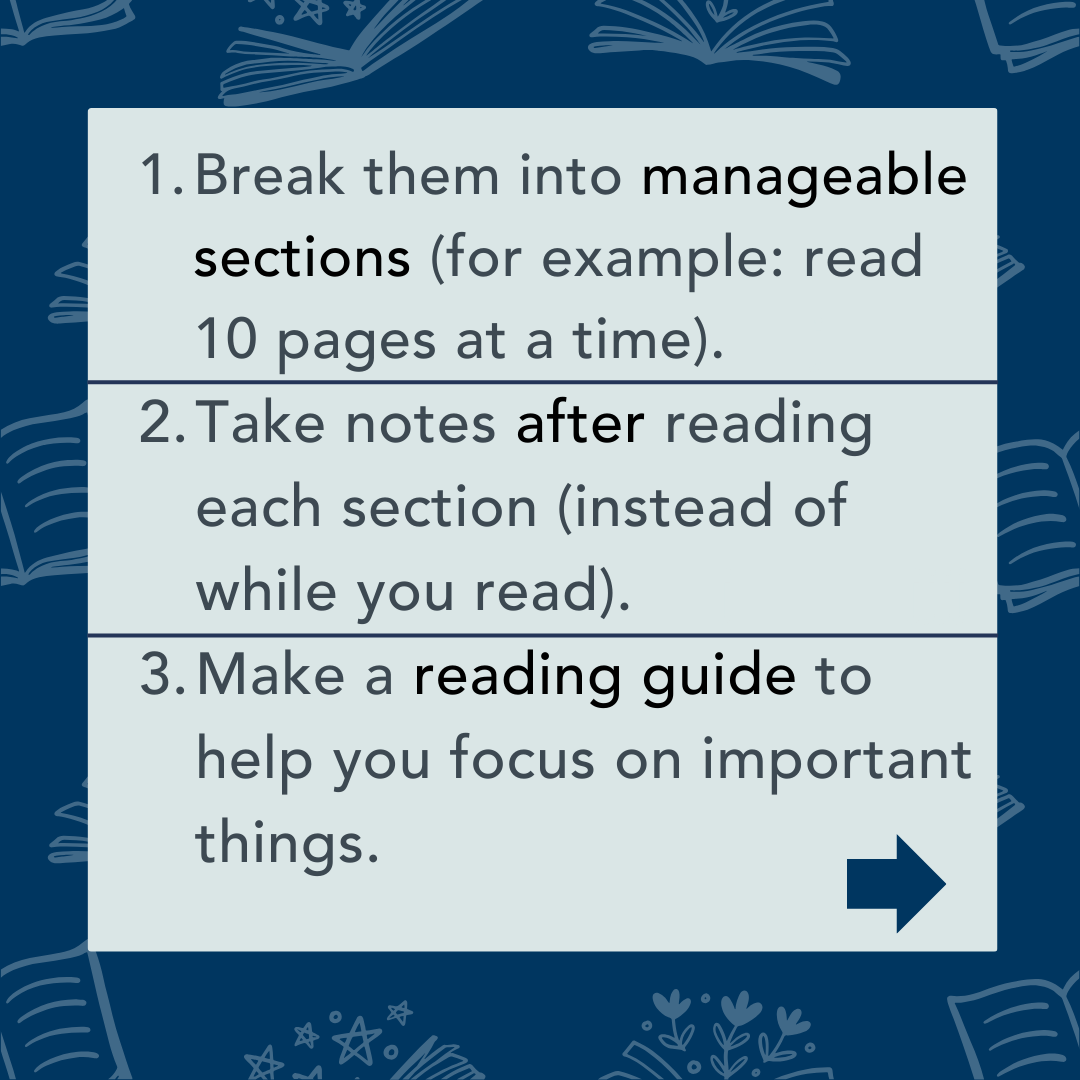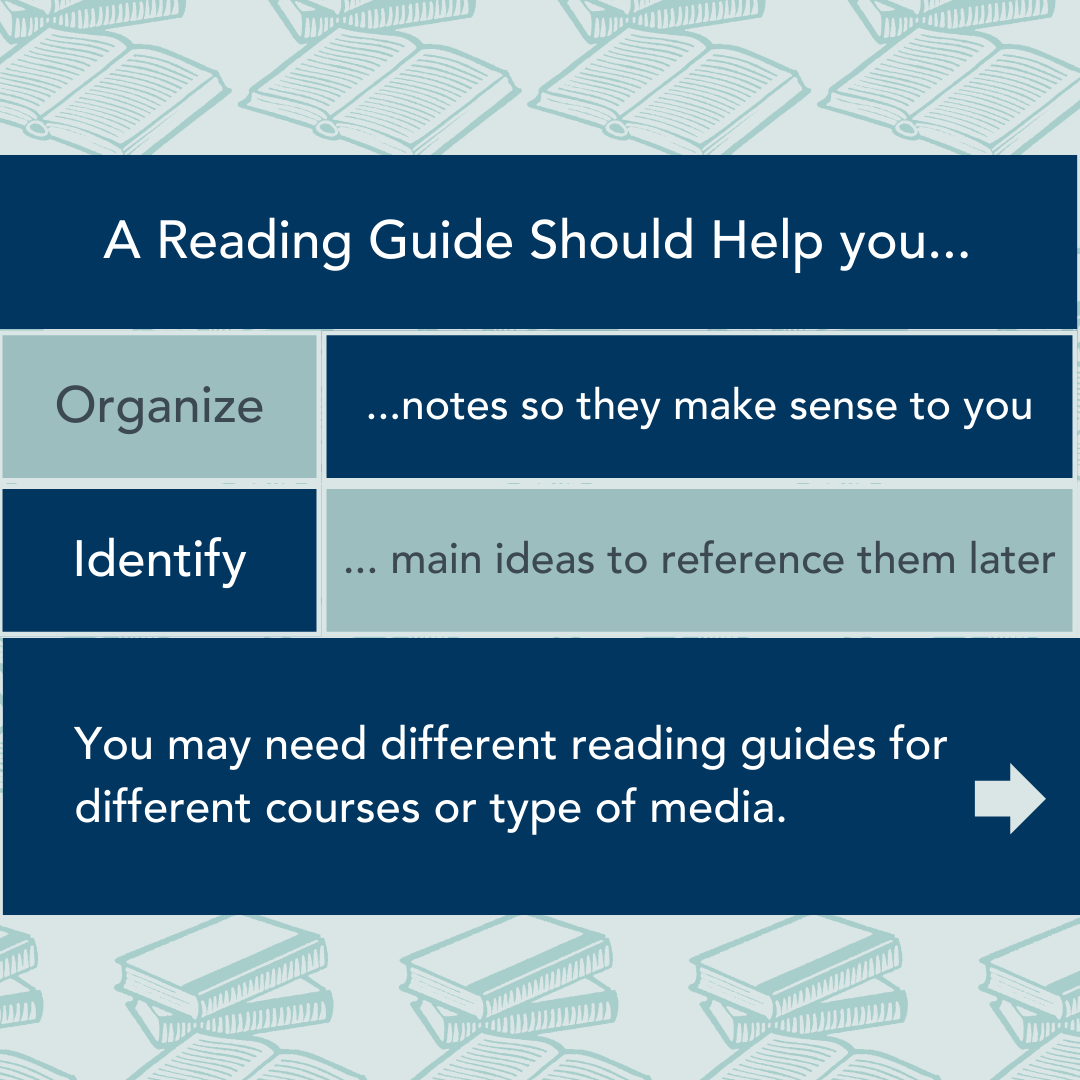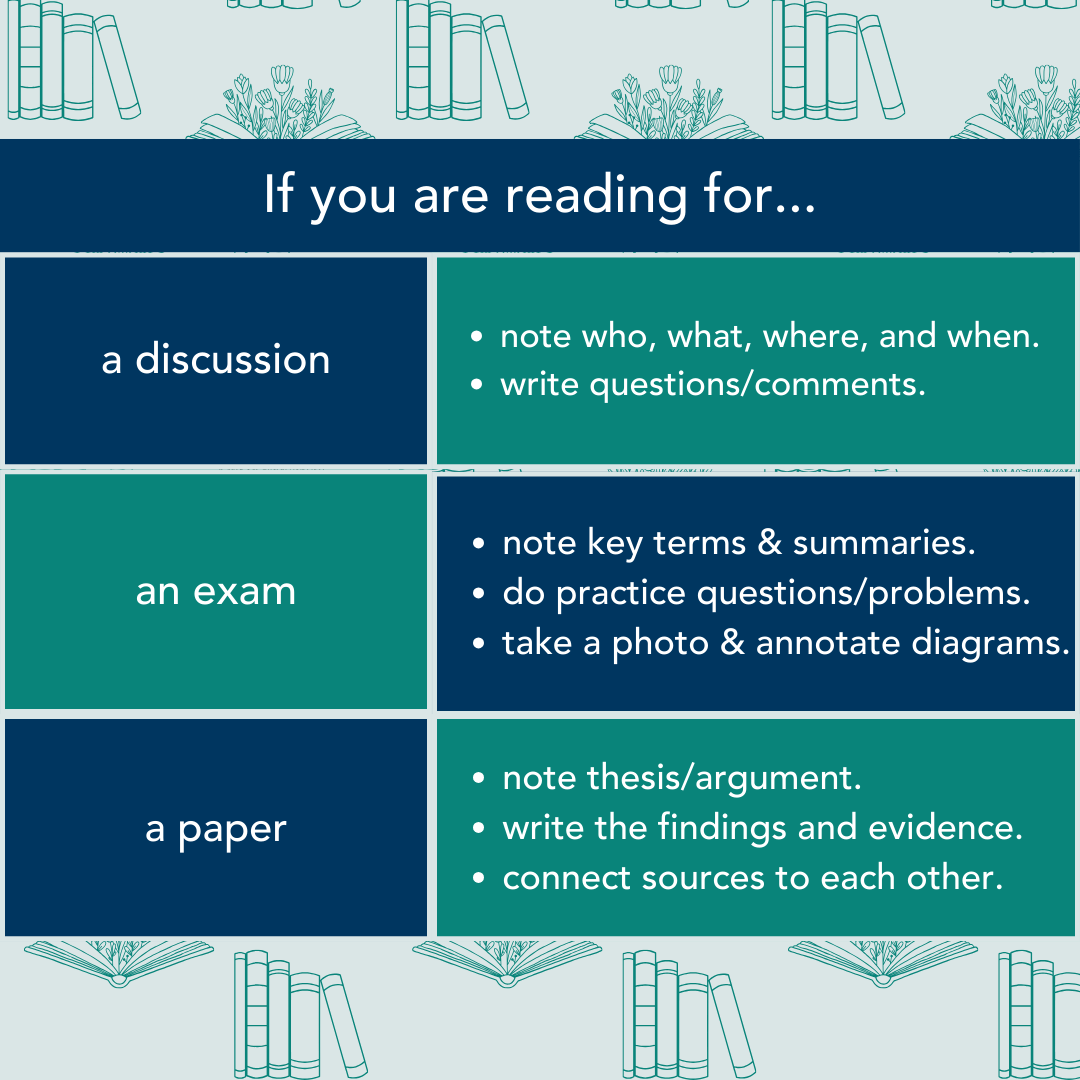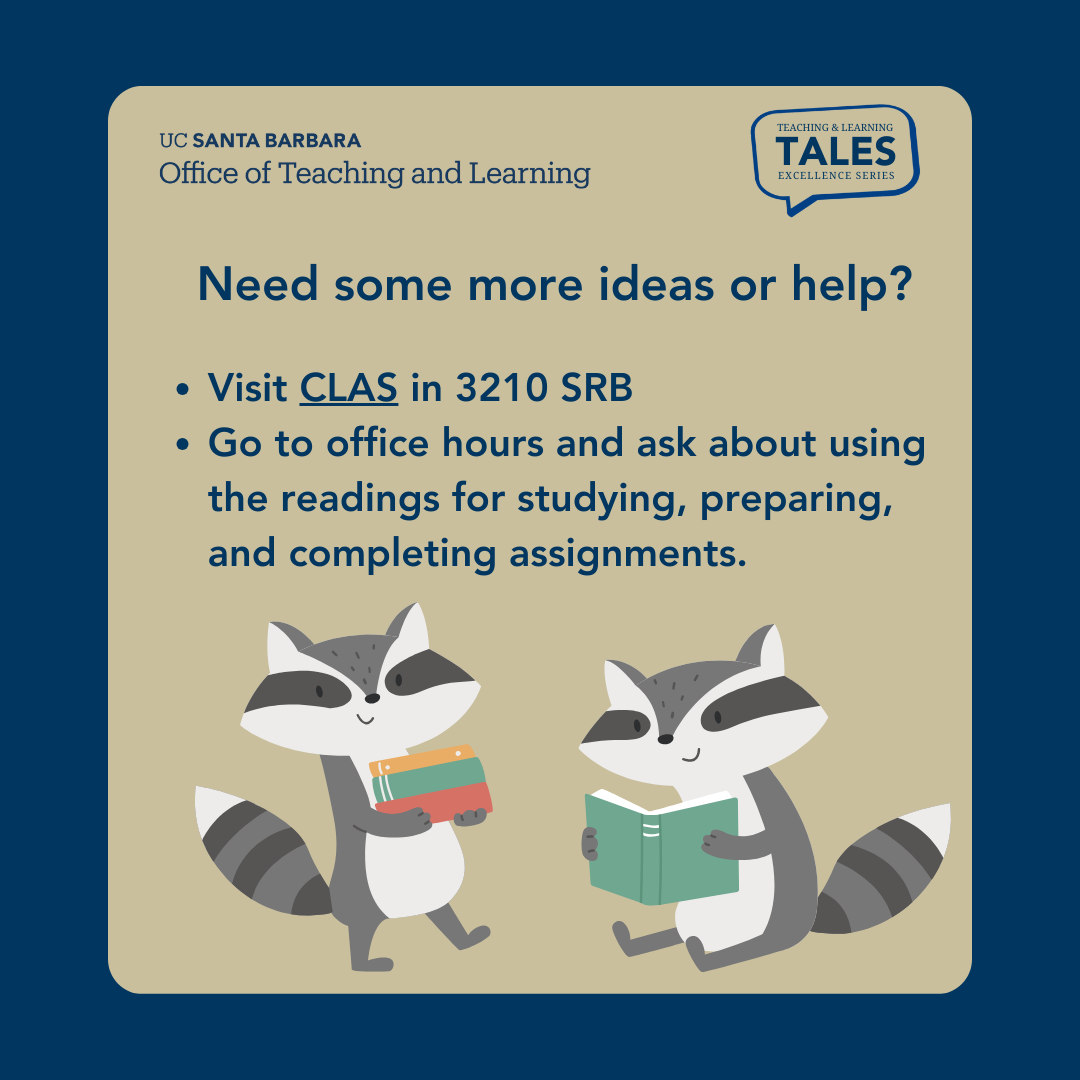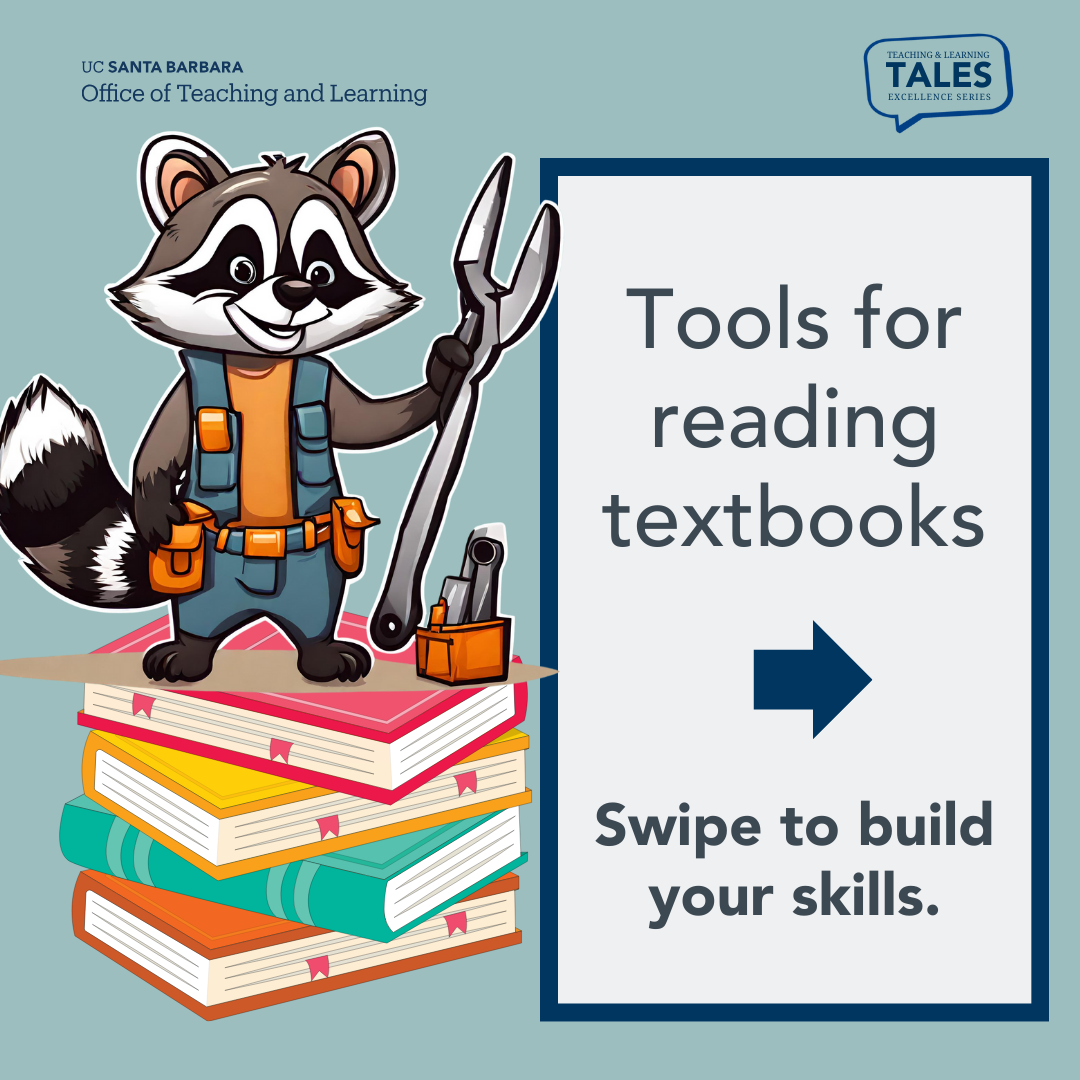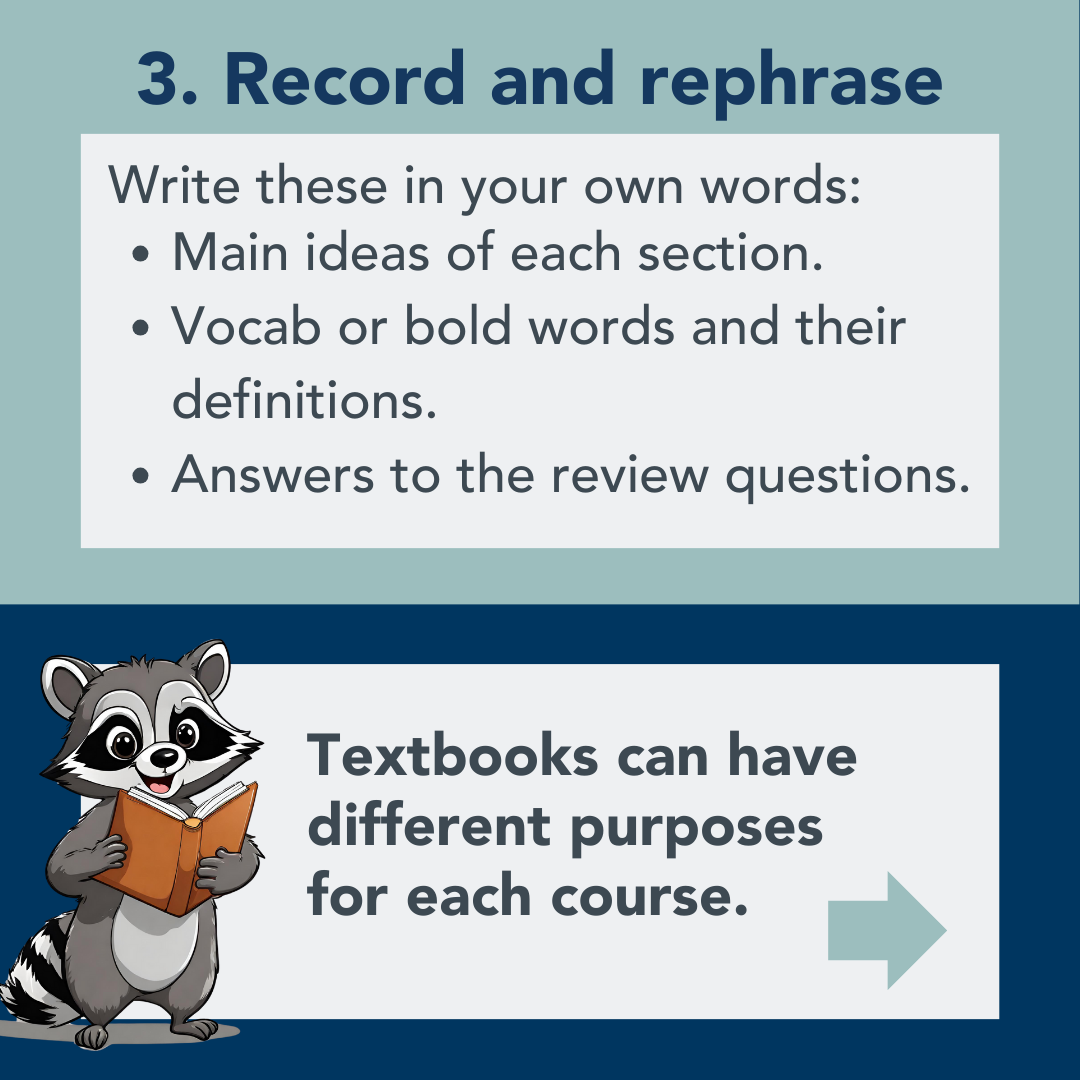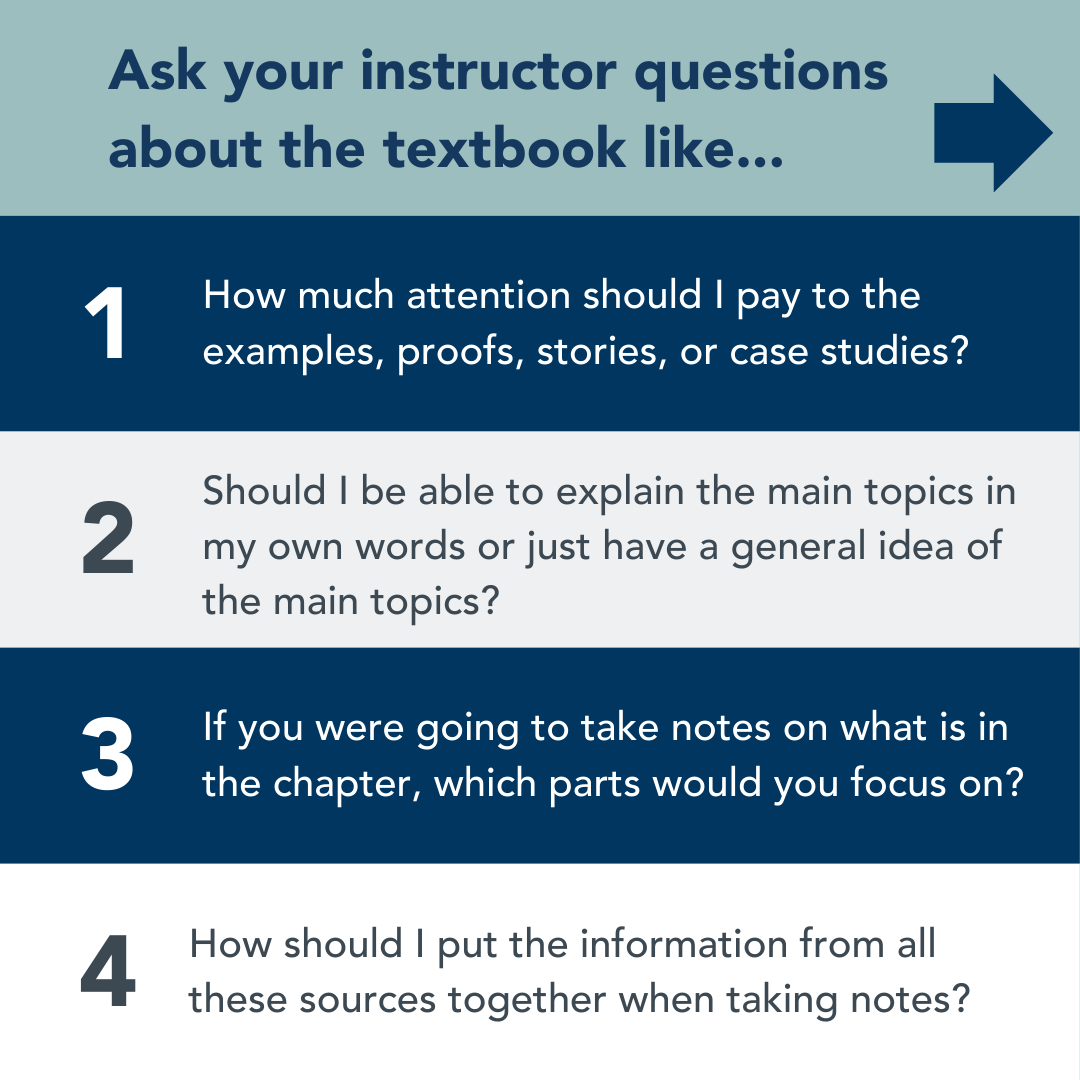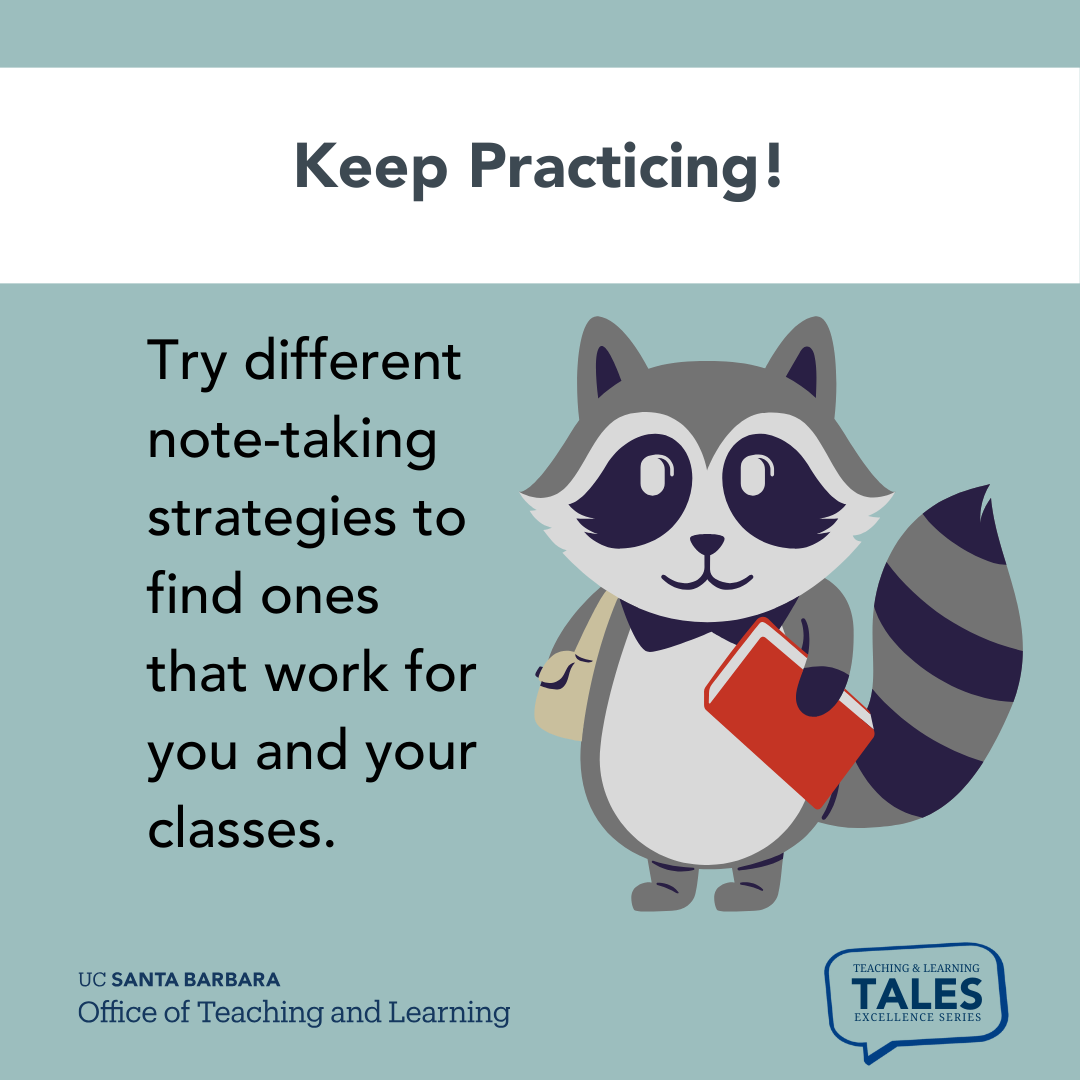Instructors: Demystify Your Discipline’s Academic Reading Skills
As university instructors, we intentionally provide students with readings that challenge their thinking, build their skills, and help them consider various perspectives. But sometimes students are overwhelmed by them because they are still learning the academic reading skills necessary for effective studying. Our students also bring varying levels of experience with the content, study skills, and language that influence their understanding of what you mean by “do the readings.”

We want to help students successfully work through learning challenges - and we want them to prepare for class. If they are overwhelmed by the prospect of the readings, they might not even attempt them. Here are two examples of how readings could become overwhelming to students:
- Journal articles are written with discipline-specific jargon by experts for experts - not for students. They are structured with unique section headings and jargon for each discipline, and our students are reading across many disciplines.
- In a course video, podcasts, and news articles are not just for passive entertainment - they are to be analyzed, connected, and critiqued. However, students might not know how it will be used in class, so they don’t know what to focus on.
Consider explicitly teaching your students how to read and study the content you provide so they can successfully swim in the deeper-thinking waters of their university education. Below are some questions to ask yourself about the readings you assign, and some ideas to help you teach students how “read” like experts read.
- How do people in my discipline “read” a [journal article, news article, textbook chapter, scholarly website, etc…]? Where do they begin? What questions are they asking themselves?
- What might I need to explain to novice learners about the structure of this text and which sections to focus on?
- If I were a student, how would I take notes on this to successfully participate in class or complete the assignment?
- Is there any complex language and tone/style that I should explain before they read it?
- What questions should my students be asking themselves as they watch or listen to this content?
Important Academic Reading Skills Resources for Instructors and TAs
- Template slides to show students: “How to Read” various texts, Course Reserves, and Free Newspapers (copy to your Google Drive)
- Clarify what “peer-reviewed journal articles” are to your students (PDF)
- Library’s online lesson about peer-reviewed sources (about 20 minutes for students)
- Transforming Reading Assignments (notes from a Faculty Focus podcast - copy to your Google Drive).
- How to Make a Reading Guide for your students (PDF)
Students: Tips for “reading” course content
As a student, reading many different types of texts and content for different classes might seem confusing, overwhelming, or pointless at times. If you’ve ever asked yourself questions like the ones below, read on for some ways to make your “reading” more effective and purposeful.
- What parts of this reading do I really need to pay attention to?
- Why are journal articles so confusing?
- How should I take notes on a podcast?
- Why are the textbooks for each class so different?
Tip 1
The kind of content matters
Each type of content has a different audience, structure, and purpose. Knowing those things can explain its purpose, and help you decide what to focus on as you “read”.
| Content - type | audience | structure | purpose |
|---|---|---|---|
| Textbook | Novice Students | Main topics, subtopics, examples, summaries | Overview and practice |
| Journal Article | Experts and Researchers | Specific sections, such as: Abstract, Introduction, Literature, Methods, Findings, Conclusion | Relate why and how a specific study was conducted, and what it found out. |
| Blog, Podcast, Video, Website, Infographics | General Public | Varies | Usually to persuade or influence, but could also be informative. |
Tip 2
Talk to your instructors
Each field of study has its own vocabulary, ways of learning, and norms for expressing knowledge. For example, math textbooks aren’t used in the same way as a history textbook. They are also written in very different styles. However, you (and your instructor!) may never have explicitly thought about those differences. So consider asking your instructor questions like these:
- If you were going to take notes on this reading, which parts of it would you focus on?
- Should I read this to summarize general information, or should I compare and connect it to something else?
- The style of this reading is new to me. Should I read it from beginning to end, or skip around to specific sections?
Tip 3
Check out the media below for more information
Below are the social media posts we created for you to better understand how to “read” more effectively.
